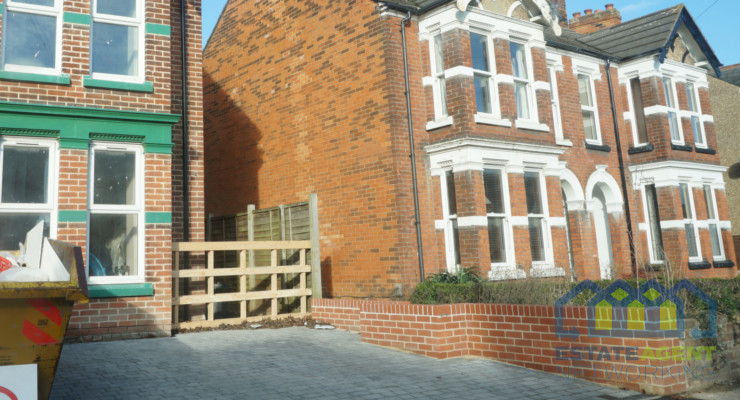Sellers of larger homes make £122.5k average capital gains, crushing the gains from flats
-
Sellers of detached homes made £122,500 in capital gains when selling their home over the last 18 months while flats yielded an average gain of £27,000
-
Sellers in England and Wales made an average gain of £72,000, a 38 per cent increase in value from when they bought the property
-
The average seller in London unlocked £130,000 in capital gain, large enough to purchase an average-priced home outright in 11 local authorities in Northern England
-
Homeowners in Northern England who sold after a 15- to 20-year tenure made £30,000 less on average than those who sold after a 10- to 15-year period
-
The largest single profit was secured by the longest-term owners (20-25 years) in London, who saw colossal average gains of £361,500
Sellers of detached properties have generated average gains that are more than double those achieved by flat owners in the last 18 months, according to new analysis1 of property sales data by Zoopla, one of the UK’s leading property websites.
Overall, sellers in England and Wales made an average gain of £72,000, a 38 per cent increase in value since the purchase of the property. The analysis finds that the average time in a property between buying and selling was 9 years for homes sold in the last 18 months.
Bigger homes see sizable gains
Home size has emerged as a powerful driver of value gains in the housing market over the last 18 months, revealing the premium additional space can command for a home. Those selling larger homes made dramatically more money, with the average seller of a detached house, banking an average profit of £122,500. This substantial gain is 70 per cent higher than the national average. Semi-detached properties also generated strong returns, yielding average gains of £80,000 (a 44 per cent increase), closely matching the percentage gain of detached homes (45 per cent).
Table 1: Average gains by property type
|
Property Type |
Avg capital gain released during sale (£) |
Avg gains released during sale (%) |
Avg time in property (years) |
Avg sold price (£) |
|
|
Flat |
£27,000 |
15% |
9 |
£220,000 |
|
|
Terraced |
£64,250 |
40% |
9 |
£236,000 |
|
|
Semi-detached |
£80,000 |
44% |
9 |
£273,500 |
|
|
Detached |
£122,500 |
45% |
9 |
£410,000 |
Source: Zoopla Analysis 2025
In sharp contrast, sellers of flats over the last 18 months have seen the lowest average gains, netting just £27,000, a 15 per cent increase and less than a quarter of the gains achieved by detached homeowners. This market lag is directly linked to shifting buyer preferences and affordability pressures, with high mortgage costs and the desire for more space driving demand away from flats towards the more robust terraced and semi-detached property types.
The 15-year tenure trap
The legacy of the global financial crash has created a “Tenure Trap” for some sellers. Across the majority of Great Britain, homeowners who sold after holding their property for 15 to 20 years, made less money than those who sold after a shorter 10 to 15 year period. In Northern England, the average gain for the 15-20 year cohort was just £45,000, £30,000 less than the £75,000 secured by those who held for 10 to 15 years. This market anomaly is a direct result of slower house price recovery outside of southern England following the global financial crash.
Table 2: Gains vs length of homeownership
|
Length of homeownership |
London |
Midlands |
Northern England |
Southern England |
Wales |
|
Less than 5 |
£40,000 |
£28,000 |
£27,955 |
£30,000 |
£32,500 |
|
5 to 10 years |
£52,000 |
£61,500 |
£55,050 |
£65,000 |
£65,000 |
|
10 to 15 years |
£175,000 |
£100,000 |
£75,000 |
£132,000 |
£85,005 |
|
15 to 20 years |
£235,000 |
£85,000 |
£45,000 |
£136,250 |
£60,050 |
|
20+ years |
£361,500 |
£156,200 |
£121,000 |
£225,000 |
£130,050 |
Source: Zoopla Research 2025
However, extreme long-term ownership still yields the most capital gains, particularly in higher value markets. Those who stayed in their homes for 20 to 25 years bypassed the global financial crash peak entirely and have benefitted from multiple periods of strong growth. The average seller in this cohort in London unlocked a massive £361,500 in capital, the single largest gain across Great Britain. Even outside the capital, gains are substantial for the 20 to 25 year group, securing £225,000 in Southern England and £121,000 in Northern England.
The £130k London benchmark vs. North East realities
Sellers in London and the South East consistently see the largest monetary gains when a property is sold, which is primarily due to higher property values, longer average tenure and stronger house price growth up until 2016. The average seller in London has gained £130,000 (35 per cent of the average purchase price) while those in the South East averaged £94,000.
Table 3: Average gains by region
|
Region |
Avg. gains crystalised during sale (£) |
Avg. gains crystalised during sale (%) |
Avg time in property (years) |
Median sold price |
|
London |
£130,000 |
35% |
10 |
£513,000 |
|
South East |
£94,000 |
35% |
9 |
£370,000 |
|
East |
£84,000 |
36% |
9 |
£330,000 |
|
South West |
£80,005 |
37% |
8 |
£303,000 |
|
West Mids |
£70,000 |
41% |
9 |
£247,000 |
|
E Midlands |
£68,000 |
41% |
8 |
£243,000 |
|
Wales |
£65,000 |
45% |
9 |
£210,000 |
|
North West |
£62,000 |
42% |
9 |
£215,000 |
|
Yorkshire and the Humber |
£55,000 |
38% |
9 |
£205,000 |
|
Scotland |
£37,200 |
24% |
6 |
£154,700 |
|
North East |
£35,000 |
26% |
9 |
£165,000 |
|
UK |
£72,100 |
38% |
9 |
£285,000 |
Source: Zoopla Research 2025
This £130k unlocked by the average London seller is enough to purchase an average-priced home outright in 11 local authorities in the North of Britain. Conversely, sellers in the North East lagged behind, gaining just £35,000 on average (26 per cent of the original purchase price), a figure constrained by the region’s house price inflation, which has been slow to recover since the global financial crash.
While London sees the largest cash gain, some regions are achieving strong returns relative to their starting price. Wales, the North West, and the Midlands all recorded appreciation of 41 to 45 per cent, showcasing that while the monetary sums are smaller (e.g., £65,000 in Wales), those who bought at a lower initial price point still stand to benefit from decent gains.
Richard Donnell, Executive Director at Zoopla, comments: “British homeowners are sitting on sizable capital gains from years of historic house price inflation which varies widely by geography and property type. The scale of gains from historic price inflation is unlikely to be repeated in future with lower levels of annual price inflation in more recent years than in the past.
“Estate agents currently have the highest stock of homes for sale in over seven years. This is boosting choice for buyers meaning it is very important that sellers are realistic over how they set their asking price. Homes that attract limited interest and require a price reduction can take twice as long to sell.”
Almost 5 million homeowners are currently subscribed to Zoopla’s free MyHome tool which helps them understand and track the value of their home, including the level housing equity, what is selling nearby and how changing the price will impact buyer demand.








